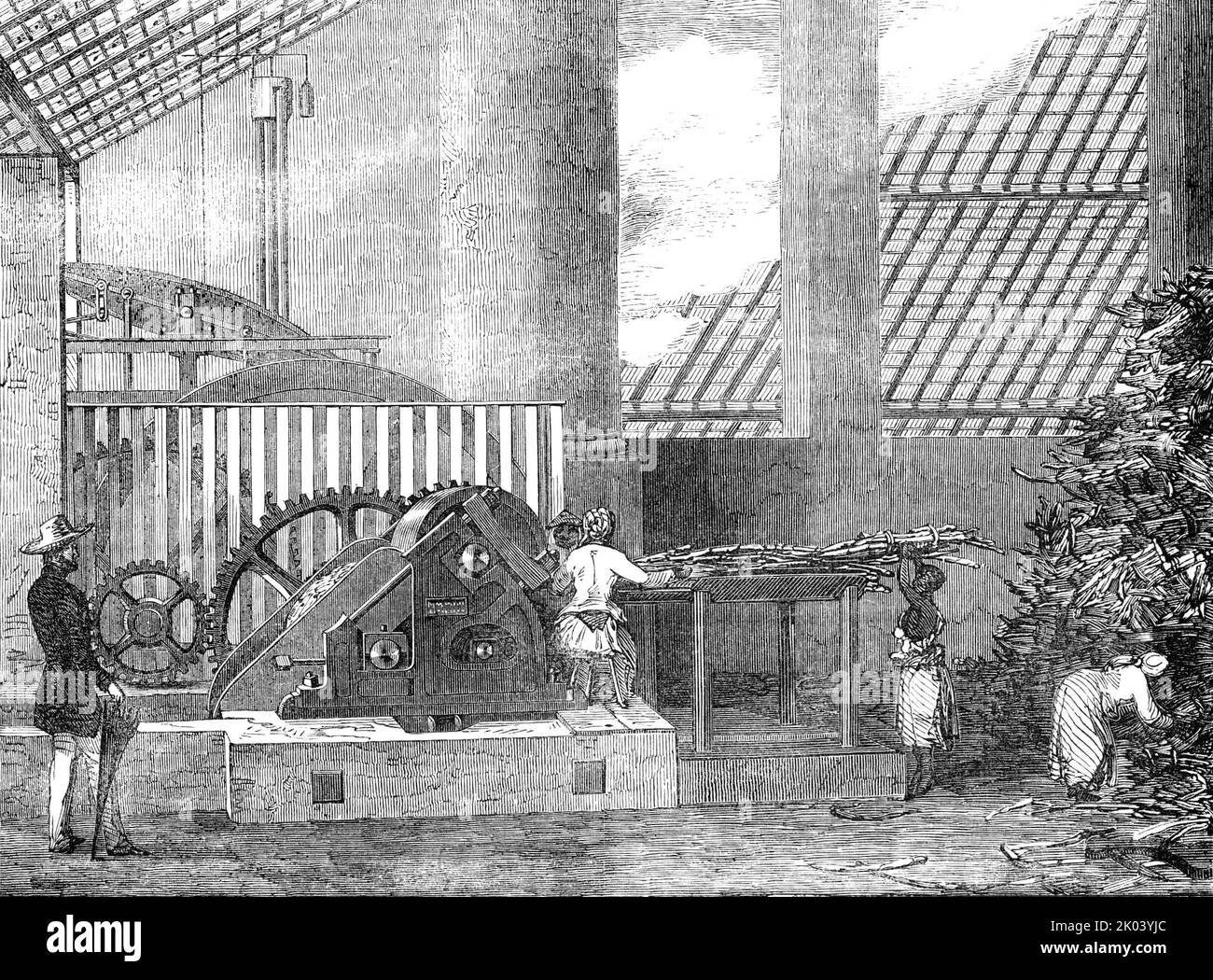Brazilian Sugar-Mill, 1854. View of '...the interior of the Mill-house on a Brazilian Sugar Estate during the time of grinding, with a Mill of an improved construction, which gives a very powerful pressure to the canes. It was patented by Messrs, de Mornay in 1851, and was introduced into that country soon after by Dr. Domingos de Souza Leao, the owner of the above estate...Two black women are seen feeding the mill with canes, which others are bringing from a heap shown on the right of the picture, where they have been thrown from the carts...The canes pass between...two large rollers...the ju

Image details
Contributor:
The Print Collector / Alamy Stock PhotoImage ID:
2K03YJCFile size:
12.8 MB (1.5 MB Compressed download)Releases:
Model - no | Property - noDo I need a release?Dimensions:
2460 x 1818 px | 41.7 x 30.8 cm | 16.4 x 12.1 inches | 150dpiPhotographer:
The Print CollectorMore information:
This image could have imperfections as it’s either historical or reportage.
Brazilian Sugar-Mill, 1854. View of '...the interior of the Mill-house on a Brazilian Sugar Estate during the time of grinding, with a Mill of an improved construction, which gives a very powerful pressure to the canes. It was patented by Messrs, de Mornay in 1851, and was introduced into that country soon after by Dr. Domingos de Souza Leao, the owner of the above estate...Two black women are seen feeding the mill with canes, which others are bringing from a heap shown on the right of the picture, where they have been thrown from the carts...The canes pass between...two large rollers...the juice...is conducted by troughs to the boiling-house...On repeated experiments made at the Carauna estate, from 70 to 74 lbs. of juice were obtained from 100 lbs. of canes; while from the mills in use in the West Indies the yield does not average more than 55 to 60 lbs. to the 100 lbs'. From "Illustrated London News", 1854.